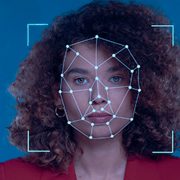-
Risk 360
Why do financial risk professionals also need to study Enterprise Risk Management (ERM)?
Introduction: In the fast-evolving landscape of risk management, professionals dedicated to financial risk ... -
Risk in my Life
10 Key risk management lessons from ten diverse brands
Risk management is a critical component of any successful business strategy. Companies across ... -
Risk 360
Why Pollution Risk is more severe than we imagine: Unseen consequences and systemic threats
In the global discourse on environmental hazards, pollution risk is often discussed in ...
Risk 360
Why do financial risk professionals also need to study Enterprise Risk Management (ERM)?
Introduction: In the fast-evolving landscape of risk management, professionals dedicated to financial risk are increasingly ...
Risk in my Life
10 Key risk management lessons from ten diverse brands
Risk management is a critical component of any successful business strategy. Companies across various industries ...
Risk 360
Why Pollution Risk is more severe than we imagine: Unseen consequences and systemic threats
In the global discourse on environmental hazards, pollution risk is often discussed in terms of ...
Latest News
-
Careers
20 Career Options after Studying Enterprise Risk Management (ERM)
Enterprise risk management (ERM) is a vital function in organizations across various industries. ... -
Startups & SMEs
Safeguarding Your Legacy: Setting Up Risk Management in Family Business
Family businesses hold a unique place in the corporate landscape, often spanning generations ... -
Boardroom
10 Reasons why CEOs need to invest in Enterprise Risk Management (ERM)
CEOs should invest in enterprise risk management (ERM) because it provides several significant ... -
Careers
An In-depth Look at the global IRM Designations in Enterprise Risk Management (ERM)
Enterprise Risk Management (ERM) is an evolving discipline aimed at helping organizations identify, ...


















